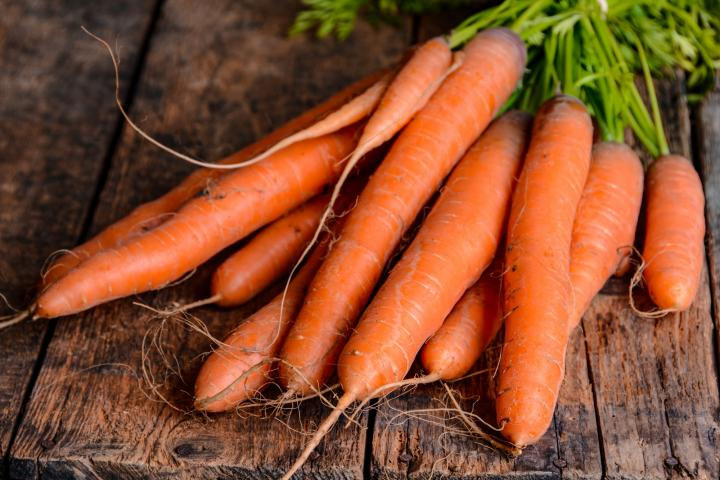
Plant characteristics
Plant Type:
- Vegetables
- Annual
Sunlight Requirements (where to plant related to sun)
- Full Sun
- Full Sun or Partially Shade
Soil Type (type of soil plant needs)
- Soil with Drainage but Wet
Climate Type (how tollerant is to frost?)
- No Frost Tolerant
Fragrant Plant (do flowers have an aroma?)
- No Fragrant Flowers
Difficulty Level (how hard is to cultivate this plant?)
- Easy
Showing Season (which months can we sow seeds)
- January
- February
- March
- April
- May
- June
- July
- August
- September
- October
- November
- December
Planting Season (which months can we plant or transplant)
- January
- February
- March
- April
- May
- June
- July
- August
- September
- October
- November
- December
How to grow Carrots
The carrot, this orange vegetable, is one of the vegetables that you should have in your garden. It is tasty, rich in sugars (second only to beetroot), rich in minerals and very tasty. Some say it is also an aphrodisiac.
Other names for carrot
Latin name: Daucus carota subsp. sativus Umbelliferae Family. Umbelliferae Family
Greek name: Καρότο (single), Καρότα (plural)
Today there are basically 4 mainstream varieties of carrots:
Carrots of the Chantenay variety are usually short and bold. They are used in processed foods and for animal feeds.
Carrots of the Danvers variety were developed in Danvers Massachusetts in 1870’s decade. They are hard and grow well in dense soils. They are more conical in shape and end in a small tip.
Carrots of the Imperator variety are common in supermarket. They are more elongated than other varieties and more uniform in shape.
Carrots of the Nantes variety have wide end and are almost cylindrical in shape. They were cultivated for their sweetness.
How to start carrots from seeds
To sow carrot seeds you have two options.
- After you have prepared the soil, you can drop the seeds in bulk at the place where you will grow them. Then cover them lightly with soil. You can do this using a rake. As you “level” the soil, the carrot seeds will be buried.
- Plant the carrot seeds organized in rows. The distance between the rows should be about 20 cm. The sowing depth should be 0,5 to 1 cm. The distance between the seeds should be 1 to 2 cm. When the carrots start to appear after 1 to 2 weeks, you will have the opportunity to thin them out to leave one plant every 4 to 10 cm.
Carrots love sunny places. So pick a spot in the garden that has full sun.
Thin out carrots
When the plants reach a height of about 5 cm, you should thin them out. Remove plants so that the remaining plants are 4 to 10 cm apart. Thinning is important so that the carrots have space to grow.
Carrots irrigation
Carrots need good irrigation. But the soil should be able to drain the water and not stagnate.
Best soil for carrots
Carrots can be grown almost anywhere (even in a pot). But they prefer the soil to be soft, well-drained and rich in nutrients.
Most of the problems you can encounter with carrots cultivation are due to the growing conditions: stagnant water, nutrient-poor soil and soil obstacles that prevent carrots from growing, such as hard soil and even stones.
Make sure the soil is soft to a depth of 15 to 20 cm. This requires good digging and enriching the soil with compost or manure, before planting.
Harvesting carrots
You can harvest the carrots in whatever size (growing stage) they are. In fact, the younger they are, the more tender there will be.
Most likely, of course you can wait for them to grow up. They taste best when they have a bright carrot color. After harvesting you can keep them in the fridge at temperatures just above 0°C.
